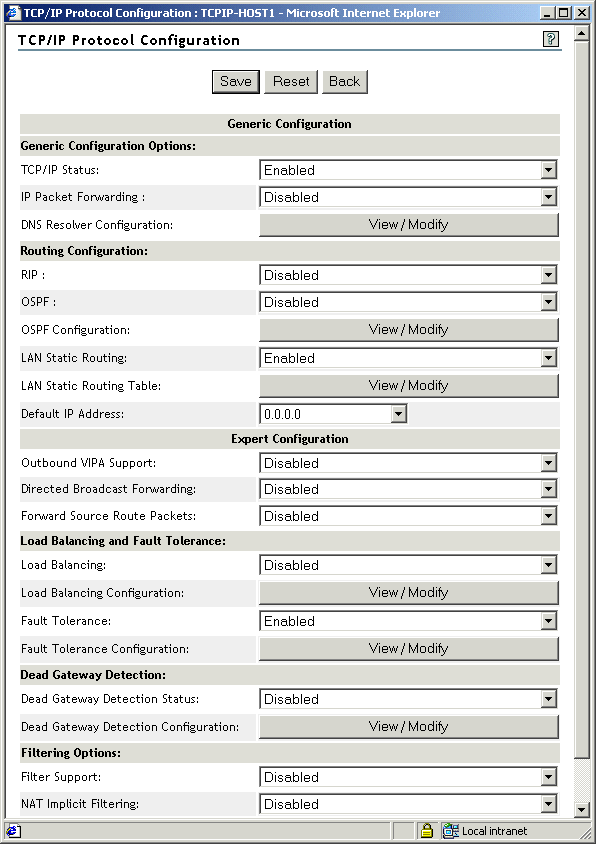3.5 Configuring TCP/IP
You can use Novell Remote Manager or INETCFG to configure the TCP/IP protocols.
3.5.1 Using Novell Manager
-
Click in the TCP/IP Configuration Menu window to display the TCP/IP Protocol Configuration window.
Figure 3-6 TCP/IP Protocol Configuration Window

The TCP/IP Protocol Configuration window helps you to configure the TCP/IP related properties of the stack.
The functionality of this window is the same as the INETCFG screens. However, some of the INETCFG screens have been merged into one window here. Some of the important fields are described here:
Generic Configuration: These are the general properties of TCP/IP. The Routing Configuration properties related to OSPF, RIP and LAN static can be set here. You can also set the default IP address of the machine from among the configured IP addresses.
Expert Configuration: These properties are related to specific features of the stack, such as load balancing, fault tolerance, outbound VIPA support and filtering. The user can configure any of these to suit the needs of the scenario that the stack is running in.
The tab is provided in some of the fields to further view or modify the particular properties.
-
Select the settings you want, then click Save to save the settings and exit the window.
3.5.2 Using INETCFG
-
Load INETCFG, then click .
-
Select from the list of protocols.
-
In the TCP/IP screen, enable or disable the following:
-
TCP/IP
-
IP Packet Forwarding
-
OSPF
-
LAN Static Routing
-
Dead Gateway Detection
-
SNMP Manager
-
DNS Resolver
-
Load Balancing
-
Fault Tolerance
-
Filter Support
-
NAT Implicit Filtering
-
Expert Configuration
-